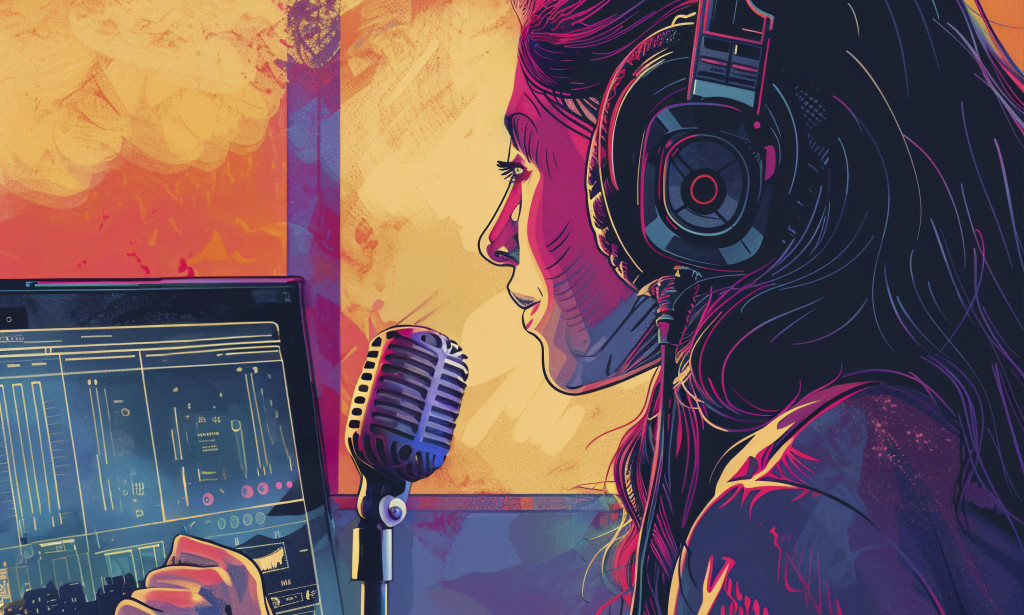In the anime world, voice acting is unique. Emotions, facial expressions, and distinctive vocal cues of voice actors bring cartoon characters to life, giving fans around the world memorable moments. But with the fast development of artificial intelligence, a new challenger has arrived: anime AI voice generator. These advanced technologies are now transforming the anime dubbing industry in ways that were previously unthinkable.
The Classic Problems of Anime Dubbing
Anime dubbing has traditionally been a painstaking and time-consuming task. The translation of Japanese dialogue into other languages involves not only correct translation but also cultural adaptation, ensuring that the original meaning and emotions are preserved. Post-translation, voice actors have to dub their lines while synchronizing with the actor's mouth movements, timing, and tone. This process can take weeks or even months, depending on the series' complexity.
Secondly, discovering talented voice actors who can deliver the unique personalities of anime characters is not always straightforward. Budget, scheduling issues, and increasing demand for localized anime content introduce additional difficulties. This is where AI voice generators provide a breakthrough solution.
AI Voice Generators
AI voice engines employ sophisticated machine learning algorithms, including deep neural networks, to process large amounts of voice data. By learning the imperfections of pitch, tone, rhythm, and emotional intensity, these models can produce very realistic and natural-sounding artificial voices. When applied to anime dubbing, AI can produce character voices that are incredibly close to those of human actors, and in many cases, across multiple languages and accents.
Specific AI platforms even enable creators to enter text and generate voiceovers within seconds. This curbs production time and expense considerably while ensuring high-quality output. The scalability and ease of use of AI voice generators make them an appealing alternative for anime companies and dubbing organizations interested in meeting the increasing global demand.
Advantages to the Anime Industry
The incorporation of AI voice generators into anime dubbing has several benefits:
-
Faster Production: AI voice generation takes less time than it would for a typical voice actor to record, enabling faster release schedules and easier localization.
-
Cost-Effective: Recording studio expenses, actor fees, and post-production editing costs are saved by the studios with anime dubbing becoming more affordable for smaller studios and independent producers.
-
Consistency: AI voices can ensure tone and quality consistency across multiple episodes and seasons without issues related to actor unavailability or changes in performance.
-
Multilingual Support: AI voice generators can easily generate dubs in various languages with greater lip-sync accuracy and cultural adaptation, thereby expanding the international fan base of anime.
The Future of AI in Anime Dubbing
Although AI voice generators will not fully replace human voice actors in the short term, they can become useful complements to the dubbing process. In hybrid models where AI creates the initial draft and human actors refine the performance, this approach can become more prevalent. This strategy can leverage the efficiency of AI with the artistry of human expression.
In addition, animation movies creator creates new possibilities for creativity in fan creations, independent anime makers, and language students who want to test anime voices without investing in costly equipment or professional recording studios.
Conclusion
Artificial intelligence voice generators are revolutionizing the anime dubbing industry with quicker, cheaper, and more scalable solutions for creators and studios. Although issues persist, particularly in terms of ethics and creativity, the promise of advantages is clear. As technology advances, the synergy between human talent and AI can potentially result in even more interactive and diverse anime experiences for global fans.



You must be logged in to post a comment.